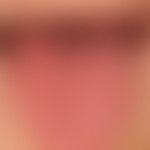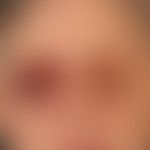Synonym(s)
DefinitionThis section has been translated automatically.
Systemic amyloidosis (see also Al amyloidosis and renal changes) with deposits of amyloid consisting of light chains of immunoglobulins. According to the isotypes, lambda and kappa amyloids are distinguished. Occurrence in monoclonal B-cell proliferation, but also idiopathic.
EtiopathogenesisThis section has been translated automatically.
Occurrence in gammopathy-associated amyloidosis, monoclonal B-cell proliferations such as plasmocytoma and Waldenström's disease, but also in multiple myeloma and malignant B-cell lymphomas. Idiopathic genesis has also been described. The amyloidogenic precursor proteins of AL amyloidoses are amino-terminal fragments of the variable regions of immunoglobulin (Ig) monoclonal light chains together with intact light chains. The process leading to amyloid formation is still largely unknown.
You might also be interested in
LocalizationThis section has been translated automatically.
Face (especially eyelids), scalp, tongue (macroglossia), palmae and plantae, trunk and neck area.
ClinicThis section has been translated automatically.
In 30-50%, a skin or mucous membrane infestation occurs.
Waxy or glassy, translucent, whitish to yellowish papules of various sizes appear, preferably on the face (especially eyelids), scalp, tongue (dental impressions up to macroglossia), palmae and plantae as well as in the genital area.
Partly formation of large plaques due to confluence of individually standing foci, partly sclerodermiform aspect.
Possibly also increased skin fragility and blistering (see also amyloidosis, blistering). Purpura, petechiae, ecchymosis (spontaneous spectacle hematoma = Raccoon's sign) see also amyloidosis, systemic. Also poikilodermic aspects.
Usually no pruritus. The prominent dermatologic leading symptom is petechial or areal hemorrhages. In older foci, hemosiderin deposits are seen.
In the anogenital region, formation of condyloma-like growths.
Alopecia and nail dystrophies have been described. The generalized amyloid deposits in these cases also affect the mucous membranes; they lead to macroglossia on the tongue.
Notice. Asymptomatic papules and plaques that bleed on minor mechanical irritation are highly suspicious for systemic amyloidosis of the AL type!
HistologyThis section has been translated automatically.
Differential diagnosisThis section has been translated automatically.
TherapyThis section has been translated automatically.
Case report(s)This section has been translated automatically.
- 65-year-old patient undergoing inpatient internal medicine treatment for haemoptysis and pectanginous complaints. The clinical-dermatological presentation was due to extensive, bilateral, periorbital bleeding. No subjective symptoms like itching or pain. Otherwise slight exsiccation eczema.
- Laboratory findings: Pronounced paraproteinemia with free capa- and lambda fragments. Biopsy of the colon and mucous membrane: Detection of amyloid deposits (Congo red). Skin biopsy (cheek): Detection of amyloid deposits in subcutaneous vascular walls, subcutaneous connective tissue and along smooth muscles. Biochemical examinations: Classification of amyloidosis as L-lambda variant. Echocardiography: Wall thickened left ventricle with reduced ejection fraction of 60%, relaxation disorder. Iliac crest biopsy: No evidence of plasmocytoma.
- Therapy: Melphalan (Alkeran once/day 10 mg p.o. for 5 days) and methylprednisolone (Urbason once/day 50 mg p.o. for 5 days) in monthly cycles. Early significant decrease of relevant laboratory parameters.
LiteratureThis section has been translated automatically.
- Alim MA et al (1999) Structural relationship of kappa-type light chains with AL amyloidosis: multiple deletions found in a VkappaIV protein. Clin Exp Immunol 118: 344-348
- Alim MA et al (1999) Structural relationship of lambda-type light chains with AL amyloidosis. Clin Immunol 90: 399-403
- Breathnach SM (1988) Amyloid and amyloidosis. J Am Acad Dermatol 18: 1-16.
- Bruch-Gerharz D et al (2001) Accumulation of the xanthophyll lutein in skin amyloid deposits of systemic amyloidosis (al type). J Invest Dermatol 116: 196-197
- Buxbaum JN et al (1979) Amyloidosis of the AL Type. Clinical, Morphological and Biochemical Aspects of the Response to Therapy with Alkylating Agents and Prednisone. Am J Medicine 67: 867-878
- Fujigaki Y et al (2003) Longterm complete remission of AL-amyloid-related nephrotic syndrome. Clin Exp Nephrol 7: 250-253
- Laimer M et al (2004) Systemic AL-lambda amyloidosis with vascular fragility. JDDG 2: 934-939
- Modesto KM et al (2005) Left atrial myopathy in cardiac amyloidosis: implications of novel echocardiographic techniques. Eur Heart J 26: 173-179
- Ruzicka T et al (1990) Cutaneous amyloidoses. Dermatologist 41: 245-255
- Sanders PW (2005) Management of paraproteinemic renal disease. Curr Opin Nephrol Hypertens 14: 97-103.
- Swan N et al (2003) Bone marrow core biopsy specimens in AL (primary) amyloidosis. A morphologic and immunohistochemical study of 100 cases. Am J Clin Pathol 120: 610-616.
Winzer M et al.(1992) Bullous poikilodermic amyloidosis of the skin with junctional blistering in IgG light chain plasmacytoma of the lambda type. Histology, immunohistology, and electron microscopy. Dermatologist 43:199-204.
Incoming links (1)
Amyloidosis of the ah type;Outgoing links (21)
Acuminate condyloma; Al amyloidosis renal changes; Alopecia (overview); Amyloidosis (overview); Amyloidosis systemic (overview); Bubble; Ecchymoses; Immunoglobulins; Macroglossia; Melphalan; ... Show allDisclaimer
Please ask your physician for a reliable diagnosis. This website is only meant as a reference.






